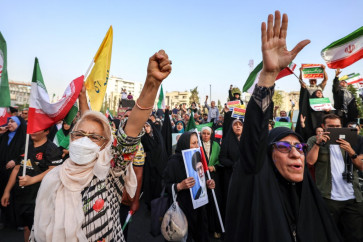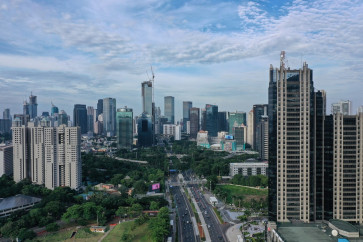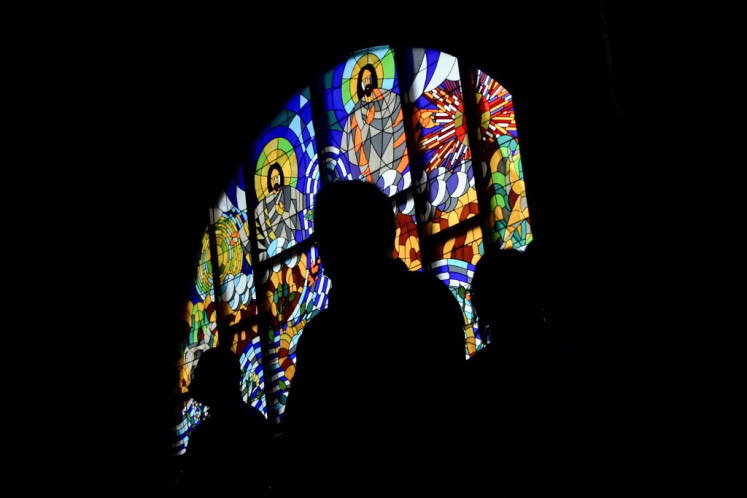Popular Reads
Top Results
Can't find what you're looking for?
View all search resultsPopular Reads
Top Results
Can't find what you're looking for?
View all search resultsAndrea Ponsi: Visualizing dynamic perceptions of Florence
From the other side: Andrea Ponsi shares his perceptions of the city of Florence through his sketches and watercolor paintings
Change text size
Gift Premium Articles
to Anyone
From the other side: Andrea Ponsi shares his perceptions of the city of Florence through his sketches and watercolor paintings. (JP/Donny Fernando)
Italian architect Andrea Ponsi shows the dynamic perception of a city through sketches and watercolor paintings.
There are many ways to define a city. The simplest may be to characterize it by its function as a big human settlement. Digging deeper into this simple description, we can discover more of the city in terms of cultural and historical context.
Perhaps that is why perceptions of a city differ from one individual to another and dynamically swift from one moment to another.
Italian architect Andrea Ponsi shares his perception of Florence in Italy in his latest exhibition, visualizing a number of spots of the birthplace of the Renaissance.
Despite spending most of his professional career as an architect abroad, Ponsi maintains a deep affection toward Florence, the city where he began his journey as an architect.
In his exhibition titled “Florence: a Map of Perceptions” at the Istituto Italiano di Cultura (IIC) in Central Jakarta, he displays a series of sketches and watercolor paintings that portray the landscape and the architectural structure of Florence.
Looking at the paintings, the public can enjoy a journey into the city of Florence and its famous landmarks, such as the Palazzo Medici Riccardi, where the lights and perspectives dynamically change and where symmetry and asymmetry can be celebrated with each differing moment.
Ponsi’s paintings present an intimate and personal point of view of Florence, a city where people and buildings commingle. He sees the city itself is a living body, with streets representing the veins in which its inhabitants move.
“The exhibition is a collection of drawings that I have made in different periods, but also they represent different ways of looking at a city, in this case Florence, the city where I live and where I am from,” Ponsi told The Jakarta Post.
The choice of watercolor for his architecture sketches of the city of Florence is based on his belief that in order to visualize the dynamic perceptions of the city, he needs the right tool to represent versatility.
”If you use oil or other means, it takes more time and more attention. Watercolor is a very simple technique and at the same time expresses my intention of showing quick perceptions that do not need to be thought out too much.
Watercolor, he says, was very good to express instantaneous ideas, as drawings are not extremely refined and they want to represent a transcendental perception.
Ponsi’s exhibition does not feel like a typical architecture-drawing exhibition due to his artistic decision to use watercolor. The exhibition feels a lot more like a refreshing showcase of artwork by an artist who does his craft with sincere passion.
Through the exhibition, Ponsi also presents his personal view — that architecture is not to be separated from the discipline of arts.
“Architecture for me, personally, is a form of art. At the same time, it also needs to deal with economic issues, regulations and the needs of a client. It is an art that requires compromises, but the compromises enhance the value of the final work,” he said.

Andrea Ponsi (JP/Hans David Tampubolon)
Ponsi was born in the city of Viareggio in the Tuscany region in 1949. He went to Florence, also in Tuscany, to study architecture under Leonardo Savioli. After his graduation in 1974, he took a master’s degree in architecture at the Architectural Association in London, and the University of Pennsylvania in Philadelphia, US. Since the early 70s, he has focused on the relationship between ecology and architecture. This focus of attention was expressed in “The Solar House,” a monographic study on bioclimatic architecture, which he published in 1977.
In the 1980s, he lived in San Francisco, where he worked with urban planner Peter Calthorpe and American architect Sim Van der Ryn, drawing up projects based on the concept of environmental sustainability. His work both as a designer and as an architect has been the subject of publications and personal exhibitions in Italy, the US and South America.
In 2000, Ponsi won an international competition for the building of the Palos Verdes Art Center in Los Angeles. His professional activities also include urban furnishing projects, commercial interiors and preparing exhibitions. He has taught architectural planning and design at several universities, including the University of California in Berkeley, the Technion Institute in Haifa, Israel and the University of Toronto.
While Ponsi’s exhibition focuses on the city of Florence and its surrounding landscape, he believes the works can help other artists, architects and people from cities across the globe to start seeing their own cities in a different way.
“I think it is important for me to show these drawings, because somehow they could help other people to see a city in a different way. So it is not just a postcard drawing, but I try to show an experience where you go through the city,” he said.
Andrea Ponsi’s exhibition is scheduled to run until Aug. 20










